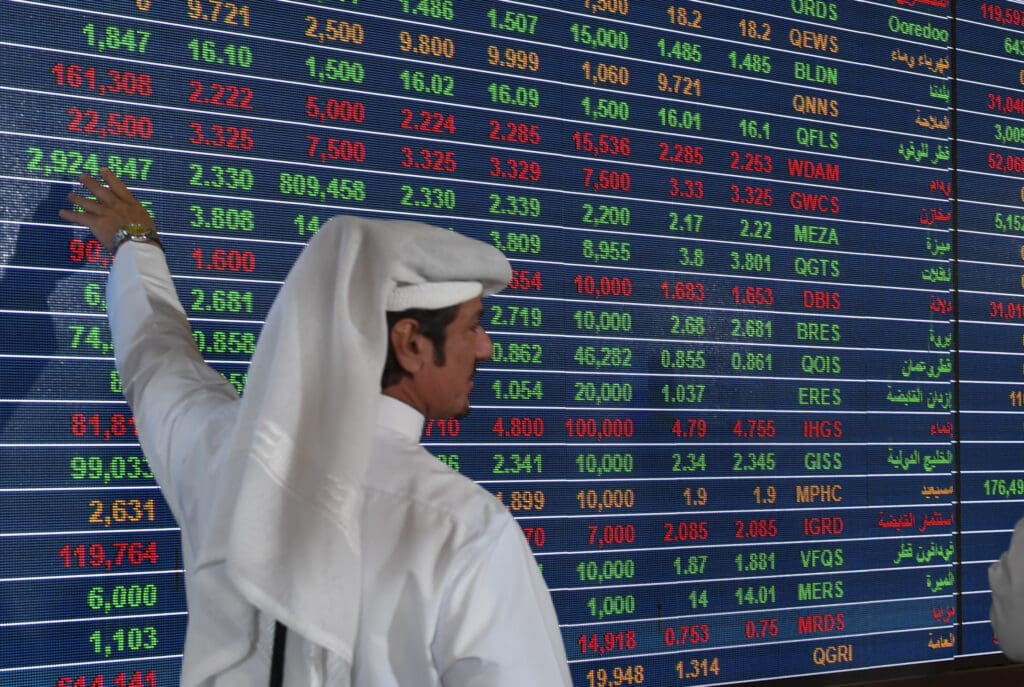Despite the turmoil rocking the Middle East and North Africa (MENA), there may be some glimmers of hope for the region’s economies in 2025. The World Bank and the International Monetary Fund (IMF) are both projecting an uptick in growth in most MENA economies. However, structural challenges, political instability, and geopolitical tensions will continue to pose barriers to sustainable development.
In its latest economic update, the World Bank projects that overall MENA growth will rebound to 3.8% in 2025, a marked increase from 2.2% in 2024. This recovery is underpinned by improved performance among the Gulf Cooperation Council (GCC) countries, where the phasing out of voluntary oil production cuts is set to underpin growth of 4.2% in 2025—more than double this year’s figure. Within the Gulf, individual countries will vary in performance—resource-rich nations like Qatar and Saudi Arabia may leverage energy revenues to stabilize growth, while others, such as Bahrain, may face constraints due to fiscal vulnerabilities.
Developing oil exporters, such as Iraq and Algeria, are predicted to grow by 3.3%, up from 2.7% the previous year, while oil-importing nations will experience a modest improvement in the same ballpark. Even Egypt, which is facing unique economic challenges, is projected to see GDP growth of 3.5% in 2025, up by a percentage point from 2024. Despite structural reforms and large-scale investment deals, Egypt’s economy has faced multiple pressures this year from external financing constraints and foreign exchange vulnerabilities, as well as the Gaza war on its border and global shocks that have hit key sources of revenue like the Suez Canal. Ongoing conflicts will continue to threaten Egypt’s economy moving forward.
Non-Inclusive Growth and Structural Vulnerabilities
Despite some cheer in the headline figures, this GDP growth has not translated into enough jobs for the region’s overwhelmingly young population. Youth unemployment is predicted to remain above 24%, a problem that has been a significant driver of unrest in the past. Indeed, young people must be productively employed if the region aspires to harness this demographic dividend. Without educational systems aligned to market demands and policy frameworks encouraging entrepreneurship, the youth bulge can turn into a liability.
More vulnerability can be seen in the region’s fiscal and current account balances. Lower oil revenues in 2024 narrowed surpluses in GCC economies, and developing oil exporters are expected to face fiscal deficits of 5.5% of GDP in 2025. Similarly, oil-importing countries continue to grapple with significant fiscal and current account deficits, compounded by rising public debt.
Inflation is projected to rise slightly to 2.7% in 2025, but with substantial variations across the region, from 2% in the GCC and 4.9% in developing oil-exporting economies to extreme inflationary pressures in countries like Iran (30%), Yemen (20.7%), and Egypt (17.2%). This will strain household purchasing power and exacerbate socio-economic inequalities.
All these vulnerabilities are exacerbated by regional instability and conflict, particularly the ongoing Gaza war. Conflict-affected nations such as Yemen face even greater economic isolation, further eroding their development prospects.
Uncertainty, already high in MENA compared to both high-income and other emerging economies, has surged further since October 7 last year. Israel’s ongoing genocide in Gaza has inflicted a massive humanitarian toll and rattled economic confidence across the region. While some key sectors like oil have shown resilience, spillover effects have been evident in neighboring countries, from Jordan’s tourism sector to Egypt’s Suez Canal revenues, which have dropped by as much as 60% due to disruptions in the Red Sea.
The World Bank’s latest report highlights how conflict can dial back development by decades. Experts have estimated that GDP per capita in war-torn MENA countries could have been up to 45% higher in hypothetical scenarios without conflict, underscoring how political turmoil can erode gains for entire generations.
Promising Prospects
Despite all these challenges, it would be shortsighted to overlook the low-hanging fruit that can still be harvested. For example, increasing openness to trade would help by facilitating technology transfers. While some MENA countries trade significantly less than predicted by basic economic models, reducing barriers could also spur competition and spark growth. In addition, simple governance reforms such as improving data collection and transparency could have far-reaching impacts. Indeed, comprehensive and publicly available data on indicators like prices, consumption, and labor markets could inform better policymaking and increase consumption and investment confidence.
Additionally, sectors such as Artificial Intelligence (AI) and green financing offer promising avenues for growth. The GCC countries’ efforts to diversify and pivot toward green financing, renewable energy, and digital transformation reflect a recognition that sustainable growth relies on more than hydrocarbon revenues. Indeed, the GCC states are leveraging abundant capital, robust information and communications technology (ICT) infrastructure, and government-led initiatives to position themselves as leaders in AI adoption. In addition, regional integration—through linkages between universities, research institutions and the private sector—with programs that draw in regional talent can also raise standards of research and development, helping the whole MENA region advance technologically. Green financing is also gaining traction; some estimates indicate that green finance in the GCC could unlock up to $2 trillion in cumulative GDP by 2030 and create over a million jobs.
That said, fostering innovation is challenging when productivity lags and gender disparities persist. The region’s female labor force participation rate is among the lowest in the world. Closing this disparity is another critical opportunity and could increase GDP per capita by around 50% in the typical MENA economy. Yet unlocking this potential means addressing long-standing cultural and regulatory barriers that prevent women from fully participating in the economy. Similarly, pushing a shift from public-sector employment toward more dynamic private sector could raise efficiency and overall productivity by untapping the high skills locked in stable but unproductive public jobs.
The MENA region’s economic trajectory for 2025 offers a combination of opportunities and challenges. While growth is set to recover, the region must confront structural weaknesses and geopolitical risks to ensure sustainable progress. The status quo is untenable, as simply replicating past policies would mean watching the region remain far behind the global frontier. But a pivot toward more inclusive growth, driven by human capital development, productivity enhancements, openness to trade and data, and the nurturing innovation and technological advancement, could provide a way forward. If the region seizes these opportunities, it has a chance not only to catch up with the rest of the world but to begin shaping its own future.


